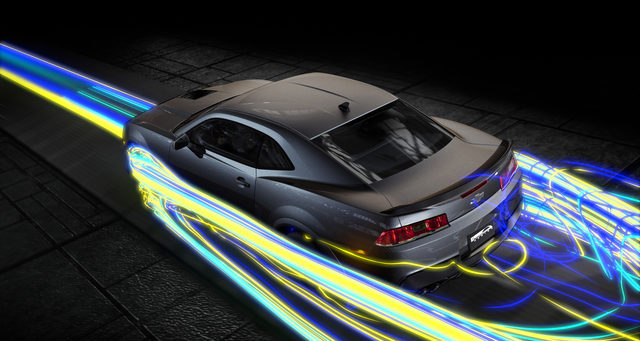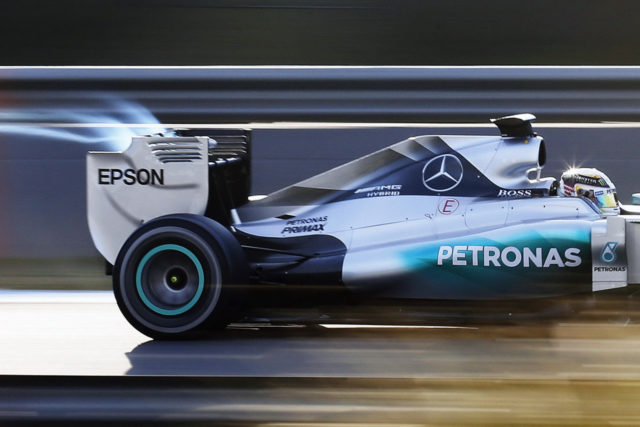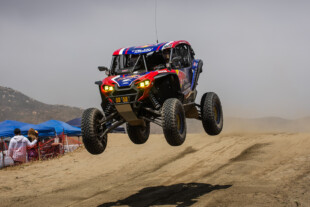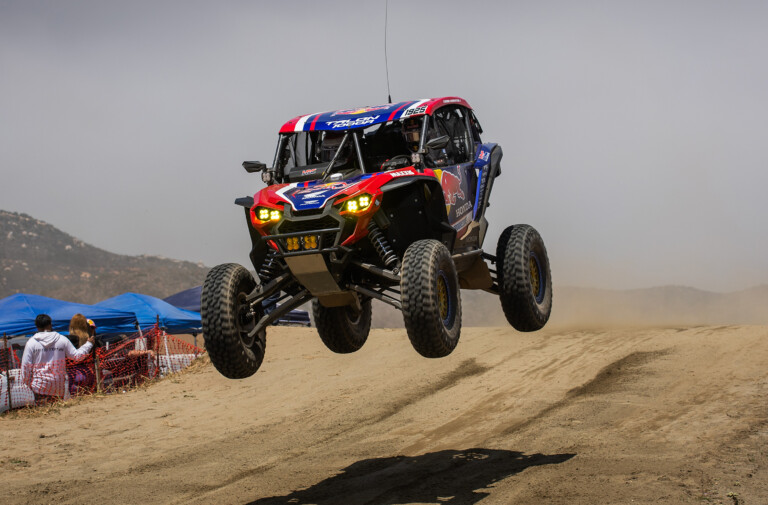One of the perennial problems with modern motorsport is aerodynamics. With massive development in aerodynamics defining the cars of today, the amount of grip and downforce is astronomical. However, the complex aerodynamics create lots of turbuence, or “dirty air.” While this helps the cars run quickly on their lonesome, it limits the proximity they can safely and effectively run with other cars.
Like a Boat’s Wake
For those who don’t understand the idea of turbulence, imagine the wake left by a boat coursing through smooth water. Though it’s invisible, the airflow is disrupted after it passes over the car in the same fashion as the water underneath the boat. With the huge number of wings present on a complicated, aerodynamically-dependent car like an LMP-style racer or any bewinged formula car, the airflow will spiral into vortices which, given a good camera is used and the lighting is right, can occasionally be seen trailing off the edge of a wing.
All the winglets and canards present on the hyper-efficient, modern aero cars mean a multitude of vortices, which eventually become chaotic turbulence. The wake left by any one of these machines means a car following closely behind simply cannot corner and brake at the same speed as the “dirty air” doesn’t push the wings into the ground as effectively. Dogfighting is difficult to do with this sort of aerodynamic discrepancy, and crucially for longer races, this lack of clean air flowing over the wings leads to tire degradation if a pursuing competitor follows a rival too closely for very long.
As a result, the spectacle has suffered somewhat, according to quite a few fans. Plenty of suggestions have been proposed by Joe Public to address the issue of cars running in a procession due to the aerodynamic constraints, and while some advocate simplifying everything so that grip is reduced and the racing closer, the aerodynamicists are always looking to gain speed and these days, speed is generally found through minute, clever tweaks of the protruding parts of the body, and it’s hard to argue with a tenth of a second found. In fact, it’s cause for celebration.
An Aerodynamic Solution
There are a few ways of tweaking the wings to give the cars a decent amount of aerodynamic grip without causing a huge amount of drag. Widening the wing would help divert the airflow around the wheels, which then flow into the sidepods and the underbody. Additionally, simplifying the wings would help make it less reliant on airflow. Yes, this might reduce overall downforce somewhat, but that brings us to the great balancing act.
If close racing is the goal, balancing overall aerodynamic grip against sensitivity to turbulent air should take precedent over increasing outright grip. Simpler aerodynamic pieces would also help bring the field together, since it seems the top teams are those which have the big bucks to put into wind tunnel testing, where they can make plenty of minute alterations that amount to significant difference in total. This is, unfortunately, how differences are made in an era of tight regulation.

Turbulence isn’t limited to F1 cars; big GTs suffer from it too, though somewhat less. Photo credit: GM
Additionally, there’s the idea of balancing mechanical grip – ie. grip from tires and suspension – against aerodynamic grip. Fairing the front wing around the front wheels might reduce some of the drag the wider wheels bring on. With the newer, wider tires, the cornering speeds will increase and the breakaway will be quicker. Perhaps they could afford a mild reduction in overall aerodynamic grip and compensate with bigger tires and a bit more power to push through any drag. It certainly worked in the 1980s.






















